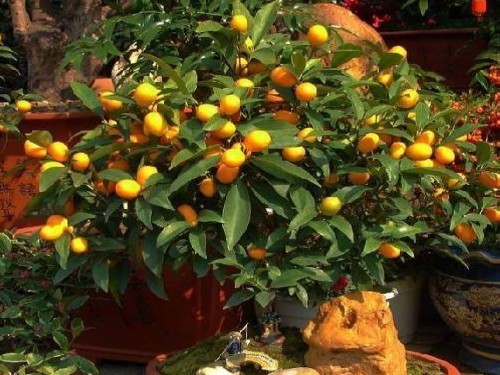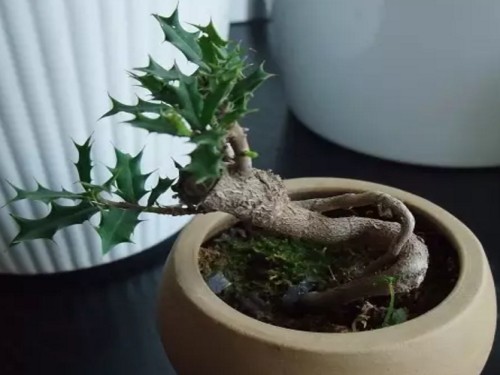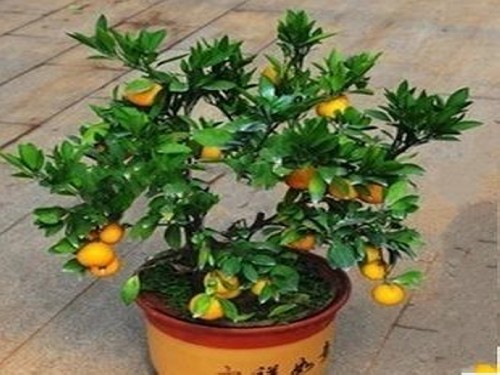Management of potted orange trees
Bonsai of orange trees should be placed outdoors, pay attention to strengthen ventilation and accept enough direct sunlight. To keep the basin soil moist, do not lack or cut off water. Also do not cause basin soil waterlogging because of basin soil consolidation and poor water flow. Potted orange trees should consciously cultivate multi-bearing autumn fruits for appreciation during the Spring Festival. Sufficient fertilizer should be applied before autumn flowers from July to August to increase the rate of fruit setting. In full bloom, water and fertilizer should be slightly reduced, and when the fruit grows to the beads, it should be applied frequently. If the plant does not grow vigorously, it should be fertilized outside the root, and liquid fertilizer should be applied until winter.
1. Lighting
Orange trees should be kept in a sunny place when they are maintained. If the light is not enough and the environment is shaded, it will often cause branches and leaves to grow, blossom and bear fruit less. As the orange tree likes a cool climate in summer, or the summer sunshine intensity is large, it is better to put it slightly in the shade at this time. It should be given proper light. During the viewing period, we can not see the sun for a long time, nor can we have too much light, both of which can cause the fruit to fall off early. It can be placed indoors in low light or moved to the balcony every 3 to 4 days to receive afternoon sunlight.

2. Temperature
Room temperature should not be too high, if the plant is not fully dormant, it will affect the flowering and fruiting in the coming year. Always use a small sprayer to clean the dust on the leaves and fruits to keep the leaves and fruits clean.
3. Watering
Orange trees like to be moist but avoid stagnant water, and the pot soil is too wet to rot the roots. Therefore, it is better to keep the basin soil moist during the growth period. It is dry and windy in spring. Spray water on the leaves once a day to increase air humidity. Spray water 2 or 3 times a day in summer, and spray water to the ground. But avoid spraying water during flowering to prevent rotten flowers and affect the fruit. The stagnant water in the basin should be dumped in time in the rainy season to avoid rotting roots. When you put it outdoors in summer, it is best to use bricks to cushion the flowerpot to facilitate drainage. It is advisable to keep the basin soil slightly moist. Pot soil is too wet, easy to rot roots, resulting in fallen leaves, fruit drop; basin soil is too dry, leaves are easy to curl, fruit atrophy. If you use porcelain pots and plastic pots, you should pay more attention to less watering.
4. Fertilization
Orange trees like fertilizer, and the culture soil mixed with 4 rotten leaf soil, 5 sand soil and 1 cake fertilizer should be selected when potted. When changing the basin, apply hoof slices or rotten cake fertilizer to the bottom of the basin as base fertilizer. From the beginning of new bud germination to before flowering, mature shallow paste residue water can be applied every 7-10 days, and alum fertilizer water can be poured alternately several times. After the beginning of summer, it is appropriate to apply more phosphate fertilizer to facilitate bud pregnancy and fruiting. Orange trees that have just borne oranges consume a lot of nutrients; at the turn of spring and summer, it is time for orange trees to sprout new buds and leaves, and they need more nutrients. After loosening the soil, put some granular compound fertilizer. It is best to bury some chicken and duck feathers in the soil, which should be buried deeper and covered tightly, otherwise it is easy to get worms. During the viewing period, when fertilizer is stopped in the basin, extra-root topdressing can be carried out, and 0.3% potassium dihydrogen phosphate solution is sprayed on the leaf surface (a small sprayer can be used) to absorb nutrients from the leaf stomata for fruit development. Spray once in about 15 days.
5. Pruning
Pruning is an important technical measure to make orange trees blossom and fruit. In order to make the tree beautiful and fruitful, each year, before the sap begins to flow, a re-pruning is carried out before the spring buds germinate, cutting off withered branches, disease and insect branches, over-dense branches and overgrown branches, leaving only 2-3 buds at the base of each branch and cutting off the rest.
6. Insect pests
According to many years of practice, it has been proved that no disease has been found in the orange tree, only the yellow Phoenix butterfly (also known as citrus butterfly). The adult is 30 mm long, with a wingspan of 100 mm, yellowish green and a broad black longitudinal pattern on the back. The front wings are daily, and the rear wings are 6. The egg is round, 1 mm in diameter, yellowish white. The larvae feed on new leaf buds and eat day and night, which can easily cause orange tree leaves to be engraved or gnawed off. The treatment of this pest: spray 1000 times of 50% fenitrothion or 1000 times of dichlorvos during the larval stage to catch insecticidal pupae outside the branches.
Management of potted orange trees:
With high temperature and humidity in summer, citrus has the highest incidence of diseases and insect pests in a year. During this period, if disease and pest control is not effective, it will seriously affect the cultivation of young branches and tips of citrus, affect the development of young fruit of fruit trees, and even cause a large number of fruit drop. Therefore, it is necessary to strengthen the work of disease and pest control in summer. Fertilization techniques are as follows:
The main results are as follows: (1) the needs of various nutrient elements of blood orange should be fully met, and the application of more organic fertilizer, rational application of inorganic fertilizer and formula fertilizer should be advocated. Fertilization was guided according to the results of leaf analysis, orchard soil analysis and blood orange phenology.
(2) fertilization method: soil fertilization is the main method, combined with foliar fertilization. The methods of ring ditch application, furrow application, hole application and soil surface fertilizer application were adopted.
(3) fertilization for young trees: apply thin fertilizer frequently, mainly nitrogen fertilizer, combined with phosphorus and potassium fertilizer.
Time: 2019-06-01 Click:
- Prev

Maintenance method of bonsai with Chinese wolfberry
Medlar bone, also known as cat thorn, tiger thorn, etc., is an evergreen shrub or small tree with strange leaves, bright green, evergreen four seasons, red fruit full of branches after autumn, not withered by winter, gorgeous and lovely, it is an excellent foliage and fruit tree species, which is often used for Christmas decoration in Europe and the United States, so it is also called Christmas tree. The branches and leaves of Chinese wolfberry are luxuriant.
- Next

How to cultivate bonsai in orange trees
Many flower friends like the golden orange tree, but when they buy it, they don't know how to raise the kumquat tree, either losing the leaves or falling the fruit. In fact, it is not difficult to raise the kumquat tree, but it needs an adaptation process. The potted plants bought by the flower friends must have been raised in the pot all the time, but transplant temporarily.
Related
- Fuxing push coffee new agricultural production and marketing class: lack of small-scale processing plants
- Jujube rice field leisure farm deep ploughing Yilan for five years to create a space for organic food and play
- Nongyu Farm-A trial of organic papaya for brave women with advanced technology
- Four points for attention in the prevention and control of diseases and insect pests of edible fungi
- How to add nutrient solution to Edible Fungi
- Is there any good way to control edible fungus mites?
- Open Inoculation Technology of Edible Fungi
- Is there any clever way to use fertilizer for edible fungus in winter?
- What agents are used to kill the pathogens of edible fungi in the mushroom shed?
- Rapid drying of Edible Fungi

